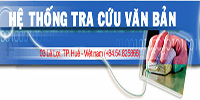|
Đào tạo
|
Giá trị nồng độ bilirubin và tỉ số bilirubin toàn phần/albumin máu cuống rốn trong tiên đoán vàng da tăng bilirubin gián tiếp cần chiếu đèn ở trẻ đẻ non
Góp ý
Nghiên cứu đầu tiên tại Việt Nam về giá trị của nồng độ bilirubin và tỉ số bilirubin toàn phần/albumin máu cuống rốn trong tiên đoán trẻ đẻ non có vàng da tăng bilirubin gián tiếp cần điều trị chiếu đèn Họ và tên nghiên cứu sinh: NGUYỄN THỊ THANH BÌNH Tên luận án: Giá trị nồng độ bilirubin và tỉ số bilirubin toàn phần/albumin máu cuống rốn trong tiên đoán vàng da tăng bilirubin gián tiếp cần chiếu đèn ở trẻ đẻ non. Ngành: Nhi khoa Mã số: 9 72 01 06 Giáo viên hướng dẫn: PGS.TS. PHAN HÙNG VIỆT Tên cơ sở đào tạo: Trường Đại học Y - Dược Huế, Đại học Huế.
Ý nghĩa khoa học Hơn 80% trẻ sơ sinh đẻ non có vàng da tăng bilirubin gián tiếp trong tuần đầu sau sinh. Đây là nguyên nhân hàng đầu gây ra bệnh não có thể phòng ngừa được ở trẻ sơ sinh. Các phương pháp sàng lọc vàng da nặng ở trẻ sơ sinh như xét nghiệm nồng độ bilirubin máu tĩnh mạch trước xuất viện hay đo nồng độ bilirubin qua da chưa được thực hiện thường quy và không phải là phổ biến hay có sẵn tại các cơ sở y tế, đặc biệt là các nước đang phát triển như ở Việt Nam. Do đó, cần có phương tiện xác định giúp tiên đoán bệnh sớm hơn. Tại Việt Nam, đây là nghiên cứu đầu tiên cung cấp thêm dữ liệu khoa học về nồng độ bilirubin toàn phần, bilirubin gián tiếp và tỉ số bilirubin toàn phần/albumin máu cuống rốn ở trẻ đẻ non. Mối tương quan của các chỉ số này trong máu cuống rốn với máu tĩnh mạch ngày 2 sau sinh. Đồng thời, xác định giá trị của các chỉ số này trong tiên đoán trẻ đẻ non có vàng da tăng bilirubin gián tiếp cần điều trị chiếu đèn. Ý nghĩa thực tiễn Đề tài được thực hiện đầu tiên tại Việt Nam với số lượng mẫu khá lớn trẻ đẻ non được làm xét nghiệm máu cuống rốn và theo dõi đến 1 tuần đầu sau sinh về kết cục vàng da. Từ đó, cung cấp thông tin quan trọng trong thực hành lâm sàng về đặc điểm lâm sàng của vàng da tăng bilirubin gián tiếp ở trẻ đẻ non; các thông tin cơ bản về nồng độ bilirubin toàn phần, bilirubin gián tiếp và tỉ số bilirubin toàn phần/albumin máu cuống rốn ở trẻ đẻ non để làm tài liệu tham khảo cho những nghiên cứu sau này ở Việt Nam; đồng thời, có thể ứng dụng các xét nghiệm này để tiên đoán sớm trẻ đẻ non có vàng da tăng bilirubin gián tiếp cần điều trị chiếu đèn. Đóng góp mới của luận án Đây là nghiên cứu đầu tiên tại Việt Nam về giá trị của nồng độ bilirubin và tỉ số bilirubin toàn phần/albumin máu cuống rốn trong tiên đoán trẻ đẻ non có vàng da tăng bilirubin gián tiếp cần điều trị chiếu đèn. Tại điểm cắt của nồng độ bilirubin toàn phần máu cuống rốn >1,82 mg/dl (#31,1µmol/L) với AUC=0,854, p<0,0001 và tại điểm cắt của tỉ số bilirubin toàn phần/albumin máu cuống rốn >0,52 mg/g với AUC=0,842, p<0,0001 có giá trị tiên đoán tốt trẻ đẻ non cần điều trị chiếu đèn.
NEW CONTRIBUTIONS OF DOCTORAL THESIS
Name of PhD candidate: NGUYEN THI THANH BINH Thesis title: Early predictors of neonatal hyperbilirubinemia need phototherapy by cord blood bilirubin and bilirubin/albumin ratio in preterm infants. Major: Pediatrics Major code: 972 01 06 Name of academic supervisor: Assoc. Prof. PHAN HUNG VIET, MD, Ph.D The name of postgraduate training institution: University of Medicine and Pharmacy, Hue University.
More than 80% of preterm infants have indirect hyperbilirubinemia in the first week after birth. It is the leading cause of preventable encephalopathy in newborns. Methods of screening for severe jaundice in newborns such as testing pre-discharge venous bilirubin concentration or measuring transcutaneous bilirubin levels, are not routinely performed and are not popular or available health facilities, especially in developing countries such as Vietnam. Therefore, there is a need for diagnostic stools to help predict the disease earlier. In Vietnam, this is the first study to provide additional scientific data on cord blood total bilirubin, indirect bilirubin, and total bilirubin/albumin ratio in preterm infants. Correlation of these indicators between cord blood to venous blood 2 days after birth. At the same time, determining the value of these indicators in the prediction of preterm infants with hyperbilirubinemia requires phototherapy. The practical significance of the doctoral thesis The study was conducted for the first time in Vietnam with a large participant of preterm infants who were tested for cord blood and followed up to one week after birth for jaundice outcomes. From there, providing important information in clinical practice about the clinical characteristics of indirect hyperbilirubinemia in preterm infants. Basic information on total bilirubin, indirect bilirubin and total bilirubin/albumin ratio in preterm infants to serve as reference for future research in Vietnam. Furthermore, it is possible to apply these tests to predict preterm infants with hyperbilirubinemia who need phototherapy. New contributions of the doctoral thesis This is the first study in Vietnam on the value of cord blood bilirubin and total bilirubin/albumin ratio in predicting preterm infants with hyperbilirubinemia requiring phototherapy. At the cutoff point of cord blood bilirubin > 1,82 mg/dl (# 31µmol/L) with AUC=0,854, p<0,0001 and at the cutoff point of cord blood total bilirubin/albumin ratio >0,52 mg/g with AUC=0,842, p<0,0001, there were a good prognostic value of preterm infants with hyperbilirubinemia requiring phototherapy.
Các tin mới hơn
Các tin đã đăng
|
Tin tức, sự kiện nổi bật
 Bản tin Đại học Huế : Kỷ niệm 43 năm Ngày Nhà giáo Việt Nam (20/11/1982-20/11/2025)
(20-11-2025 17:06)
Bản tin Đại học Huế : Kỷ niệm 43 năm Ngày Nhà giáo Việt Nam (20/11/1982-20/11/2025)
(20-11-2025 17:06)
 Đại Học Huế tiếp tục có mặt trong Bảng xếp hạng đại học Thế Giới Times Higher Education 2026 (THE - WUR 2026)
(09-10-2025 15:44)
Đại Học Huế tiếp tục có mặt trong Bảng xếp hạng đại học Thế Giới Times Higher Education 2026 (THE - WUR 2026)
(09-10-2025 15:44)
Tin tức, sự kiện mới nhất
Liên kết
|



